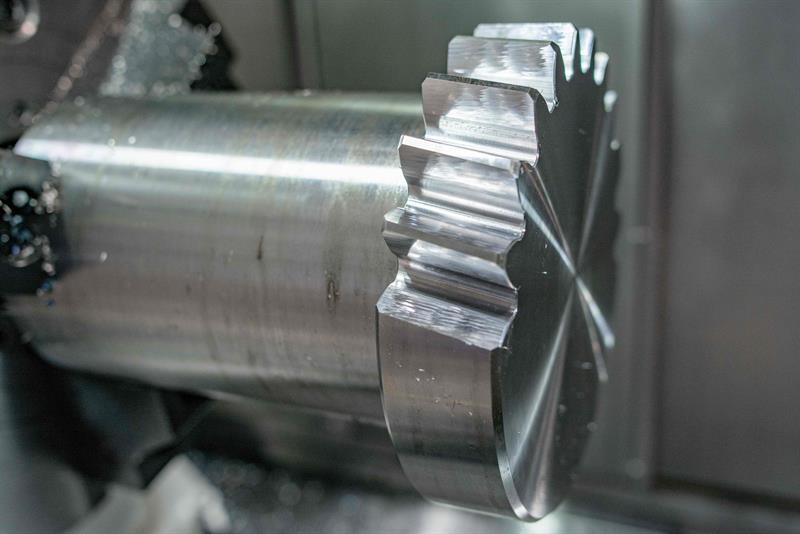The “Gear Up” workshop was hosted in cooperation with Swedish tool manufacturer Sandvik Coromant. In multiple live demonstrations the hosts presented ways to economically perform gear cutting on Okuma multitasking machines, thus effectively eliminating the need for expensive additional machines.
An increasing number of manufacturers are outsourcing gear cutting to subcontractors, believing this to be the only way to balance quality and productivity. With their three-day workshop, Okuma and Sandvik Coromant set out to bring gear machining back in-house.
Compared to a dedicated gear cutting machine, Okuma’s multitasking machines are claimed to offer more flexible production, reduced investment cost and higher accuracy. Gear hobbing in particular traditionally requires additional machines to do the job. However, a live demonstration on the Multus B750 showed that Okuma’s multitasking machines are more than up to the task. The hobbing option synchronises the spindle and the M-tool to produce splines and gears. By employing a hobbing tool, such as the Sandvik Coromant CoroMill 176, roughing, semi-roughing and finishing are achieved on a single multitasking machine and in a single set-up. Production time is therefore reduced dramatically.

Okuma and Sandvik Coromant demonstrated the latest solutions for in-house gear machining on 5-axis multitasking machines
Workshop participants were also treated to a demonstration of power skiving. The high-performance application was demonstrated on an Okuma Multus U4000 and shown to boost productivity by reducing cycle times. Okuma’s Multus U series allows for machining of rotationally symmetrical components, such as gear wheels, in a single set-up. In doing so, power skiving on a multitasking machine also ensures superior part quality, since multiple set-ups may result in centring deviations as well as spacing errors or pitch deviations when machining splines, pinions or gear wheels. The CNC-control OSP suite meanwhile provides an easy-to-use software that makes the programming of hobbing and skiving operations quick and easy.
Given the complexity of curved bevel gears, machining of these components used to require additional machining centres, expensive tools and additional set-ups. Okuma’s MU-8000V-L was demonstrated to enable high-speed, high-accuracy cutting of bevel gears through a combination of turning and 5-axis milling.
Okuma and co-host Sandvik Coromant went on to present InvoMilling, a process particularly suited for short lead-times and small or medium batch production of straight and angular gears and splines. Utilising the 5-axis capabilities of Okuma’s Multus U4000, Sandvik Coromant’s InvoMilling 1.0 package was shown to cut many different gear profiles using the same set of tools, thereby drastically reducing set-up time, lead time for tooling and tool inventory. This combination of Okuma’s multitasking machines and Sandvik Coromant’s InvoMilling package provides solutions for the entire machining process, from roughing and finishing to deburring and simulation.










